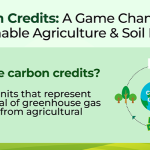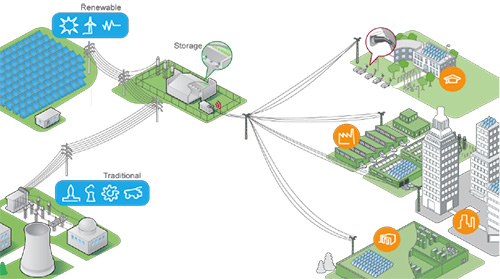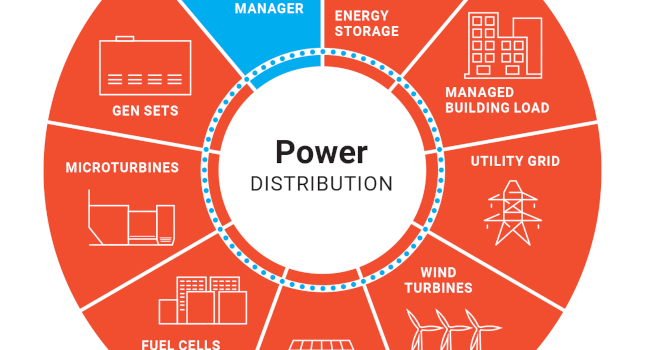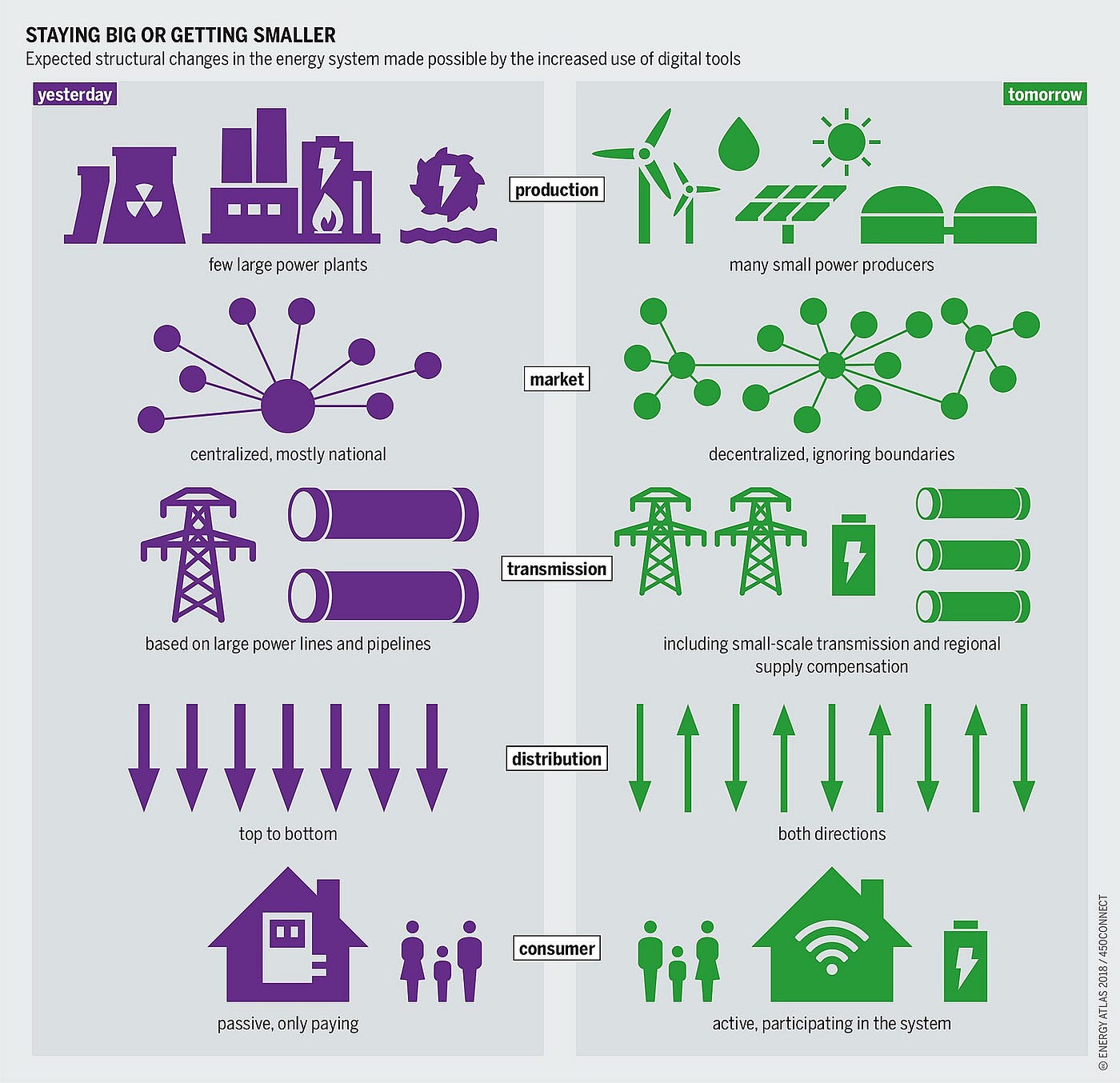The global energy landscape is undergoing a transformative shift as the world seeks sustainable solutions to combat climate change and ensure energy access for all. Micro and off-grid energy systems are emerging as critical components in this transition, offering decentralized, scalable, and resilient alternatives to traditional energy infrastructure. These systems not only provide electricity to underserved and remote communities but also play a pivotal role in reducing carbon emissions and fostering renewable energy adoption. By enabling localized energy production and consumption, micro and off-grid systems are accelerating the energy transition, bridging funding gaps, and empowering communities to take control of their energy futures.
![Accelerating the transition to a clean local energy future [WEBINAR] - 6/20/18](https://i.ytimg.com/vi/2ToK3o2DWW8/hqdefault.jpg)
- The Importance of Micro and Off-Grid Systems in Funding and Accelerating Energy Transitions
- How microgrids contribute to the energy transition?
- What are microgrids and why are they important?
- What are the benefits of integrating renewable energy with microgrid?
- What is the role of energy storage systems and their applications in microgrid?
- What is the Role of Energy Storage Systems in Microgrids?
- How Do Energy Storage Systems Improve Microgrid Efficiency?
- What Are the Applications of Energy Storage Systems in Microgrids?
- How Do Energy Storage Systems Support Renewable Energy Integration in Microgrids?
- What Are the Key Technologies Used in Energy Storage Systems for Microgrids?
- Frequently Asked Questions (FAQ)
- What are micro and off-grid systems, and why are they important for energy transitions?
- How do micro and off-grid systems accelerate the global energy transition?
- What role does funding play in the development of micro and off-grid systems?
- What challenges do micro and off-grid systems face in scaling up globally?
The Importance of Micro and Off-Grid Systems in Funding and Accelerating Energy Transitions
Micro and off-grid systems play a pivotal role in funding and accelerating energy transitions worldwide. These systems provide decentralized, scalable, and cost-effective solutions to energy access challenges, particularly in remote and underserved areas. By leveraging renewable energy sources such as solar, wind, and hydropower, micro and off-grid systems reduce reliance on fossil fuels, lower carbon emissions, and promote sustainable development. Additionally, they empower communities by creating local jobs, improving energy security, and fostering economic growth. As global energy demands rise, these systems are becoming essential tools in achieving universal energy access and meeting climate goals.
1. Enhancing Energy Access in Remote Areas
Micro and off-grid systems are crucial for providing reliable energy access to remote and rural areas where traditional grid infrastructure is either unavailable or too costly to implement. These systems enable communities to harness renewable energy sources, such as solar panels or small-scale wind turbines, to meet their daily energy needs. By doing so, they bridge the energy gap and improve the quality of life for millions of people.
See Also What Are the Main Problems With Regenerative Agriculture Credits?
What Are the Main Problems With Regenerative Agriculture Credits?| Benefit | Impact |
|---|---|
| Decentralized Energy | Reduces dependency on centralized grids |
| Scalability | Can be expanded based on community needs |
| Cost-Effectiveness | Lower installation and maintenance costs |
2. Reducing Carbon Emissions
Micro and off-grid systems significantly contribute to reducing carbon emissions by replacing diesel generators and other fossil fuel-based energy sources with clean energy alternatives. This shift not only mitigates climate change but also improves air quality, leading to better health outcomes for local populations.
| Benefit | Impact |
|---|---|
| Renewable Energy | Utilizes solar, wind, and hydropower |
| Emission Reduction | Lowers greenhouse gas emissions |
| Sustainability | Promotes long-term environmental health |
3. Empowering Local Economies
The deployment of micro and off-grid systems creates local job opportunities in installation, maintenance, and management. This economic empowerment fosters community development and reduces poverty. Additionally, access to reliable energy enables small businesses to thrive, further boosting local economies.
| Benefit | Impact |
|---|---|
| Job Creation | Generates employment in the energy sector |
| Business Growth | Supports small and medium enterprises |
| Economic Stability | Enhances financial resilience in communities |
4. Improving Energy Security
Micro and off-grid systems enhance energy security by reducing reliance on imported fuels and centralized grids. These systems provide a stable and independent energy supply, which is particularly important in regions prone to natural disasters or political instability.
See Also Is Collecting Carbon From an Already Protected Land GREENWASHING?
Is Collecting Carbon From an Already Protected Land GREENWASHING?| Benefit | Impact |
|---|---|
| Energy Independence | Reduces reliance on external energy sources |
| Resilience | Provides reliable power during crises |
| Self-Sufficiency | Empowers communities to manage their energy needs |
5. Accelerating Global Energy Transitions
Micro and off-grid systems are key drivers in accelerating global energy transitions by demonstrating the viability of renewable energy solutions. They serve as models for larger-scale implementations and encourage investment in clean energy technologies, helping to achieve international climate targets.
| Benefit | Impact |
|---|---|
| Scalable Solutions | Provides a blueprint for larger energy projects |
| Investment Attraction | Encourages funding for renewable energy |
| Climate Goals | Supports global efforts to reduce carbon footprints |
How microgrids contribute to the energy transition?

Enhancing Energy Resilience and Reliability
Microgrids play a crucial role in enhancing energy resilience and reliability during the energy transition. They operate independently or in conjunction with the main grid, ensuring uninterrupted power supply even during outages.
See Also Carbon Emissions Trading Analysis
Carbon Emissions Trading Analysis- Islanding capability: Microgrids can disconnect from the main grid and operate autonomously during emergencies, such as natural disasters or grid failures.
- Localized energy generation: By generating power close to the point of consumption, microgrids reduce transmission losses and improve reliability.
- Backup power systems: Microgrids often integrate renewable energy sources with storage systems, providing backup power during grid instability.
Integrating Renewable Energy Sources
Microgrids facilitate the integration of renewable energy sources like solar, wind, and hydropower into the energy mix. This is essential for reducing greenhouse gas emissions and achieving sustainability goals.
- Decentralized energy production: Microgrids enable communities to generate their own renewable energy, reducing dependence on fossil fuels.
- Energy storage solutions: They incorporate advanced battery systems to store excess renewable energy, ensuring a stable supply during periods of low generation.
- Grid balancing: Microgrids help balance supply and demand by managing intermittent renewable energy sources more effectively.
Reducing Carbon Footprint
Microgrids contribute significantly to reducing the carbon footprint by promoting cleaner energy sources and efficient energy management.
- Lower emissions: By relying on renewables and reducing fossil fuel consumption, microgrids help cut down carbon emissions.
- Energy efficiency: Microgrids optimize energy use through advanced monitoring and control systems, minimizing waste.
- Sustainable communities: They empower communities to adopt greener energy practices, fostering environmental stewardship.
Empowering Local Communities
Microgrids empower local communities by providing them with greater control over their energy resources and fostering economic development.
- Energy independence: Communities can generate and manage their own energy, reducing reliance on external utilities.
- Job creation: The development and maintenance of microgrids create local employment opportunities in renewable energy sectors.
- Affordable energy: Microgrids can lower energy costs by reducing transmission expenses and utilizing local resources.
Supporting Grid Modernization
Microgrids are a key component of grid modernization, enabling smarter and more flexible energy systems.
- Advanced technologies: Microgrids incorporate smart meters, IoT devices, and AI-driven systems for real-time energy management.
- Grid flexibility: They enhance the grid's ability to adapt to changing energy demands and integrate diverse energy sources.
- Resilience against cyber threats: Microgrids improve grid security by decentralizing energy systems and reducing vulnerabilities.
What are microgrids and why are they important?

What Are Microgrids?
Microgrids are localized energy systems that can operate independently or in conjunction with the main electrical grid. They consist of distributed energy resources (DERs) such as solar panels, wind turbines, batteries, and generators. These systems are designed to provide reliable and resilient power to a specific area, such as a campus, neighborhood, or industrial facility. Microgrids can function in two modes: grid-connected or island mode, allowing them to disconnect from the main grid during outages and continue supplying electricity.
- Localized energy systems that operate independently or with the main grid.
- Include distributed energy resources like solar, wind, and batteries.
- Can function in grid-connected or island mode for resilience.
Why Are Microgrids Important for Energy Resilience?
Microgrids play a critical role in enhancing energy resilience by providing backup power during grid failures caused by natural disasters, cyberattacks, or equipment failures. They ensure that critical facilities like hospitals, emergency services, and military bases remain operational. Additionally, microgrids reduce the risk of widespread blackouts by isolating problems and maintaining power to localized areas.
- Provide backup power during grid failures.
- Ensure critical facilities remain operational.
- Reduce the risk of widespread blackouts.
How Do Microgrids Support Renewable Energy Integration?
Microgrids facilitate the integration of renewable energy sources like solar and wind by managing their intermittent nature. They use advanced control systems and energy storage to balance supply and demand, ensuring a stable power supply. This helps reduce reliance on fossil fuels and lowers greenhouse gas emissions, contributing to a more sustainable energy future.
- Manage the intermittent nature of renewables.
- Use advanced control systems and storage for stability.
- Reduce reliance on fossil fuels and lower emissions.
What Are the Economic Benefits of Microgrids?
Microgrids offer significant economic benefits by reducing energy costs through efficient energy management and the use of local renewable resources. They also create jobs in the renewable energy sector and reduce the financial impact of power outages on businesses and communities. Furthermore, microgrids can provide revenue streams by selling excess energy back to the main grid.
- Reduce energy costs through efficient management.
- Create jobs in the renewable energy sector.
- Provide revenue streams from excess energy sales.
How Do Microgrids Improve Energy Access in Remote Areas?
Microgrids are a practical solution for providing energy access to remote or underserved areas where extending the main grid is impractical or costly. They enable communities to generate and manage their own power using local resources, improving quality of life and supporting economic development. This is particularly important in developing regions where energy poverty is a significant challenge.
- Provide energy access to remote or underserved areas.
- Enable communities to use local resources for power.
- Support economic development and reduce energy poverty.
What are the benefits of integrating renewable energy with microgrid?

Enhanced Energy Resilience
Integrating renewable energy with microgrids significantly enhances energy resilience. Microgrids can operate independently from the main grid, ensuring a continuous power supply even during outages. This is particularly beneficial in areas prone to natural disasters or grid failures.
- Islanding capability: Microgrids can disconnect from the main grid and continue to supply power using renewable sources like solar or wind.
- Reduced dependency: By relying on local renewable energy sources, communities can reduce their dependency on centralized power systems.
- Quick recovery: Microgrids can restore power faster after disruptions, minimizing downtime and economic losses.
Cost Savings and Economic Benefits
Integrating renewable energy with microgrids can lead to substantial cost savings and economic benefits. Renewable energy sources often have lower operational costs compared to traditional fossil fuels.
- Lower energy costs: Renewable energy sources like solar and wind have minimal fuel costs, reducing overall energy expenses.
- Incentives and subsidies: Governments often provide financial incentives for renewable energy projects, further reducing costs.
- Job creation: The development and maintenance of renewable energy microgrids create local jobs, boosting the economy.
Environmental Sustainability
The integration of renewable energy with microgrids promotes environmental sustainability by reducing greenhouse gas emissions and reliance on fossil fuels.
- Reduced carbon footprint: Renewable energy sources produce little to no emissions, helping to combat climate change.
- Conservation of resources: Utilizing renewable energy helps conserve finite natural resources like coal, oil, and natural gas.
- Biodiversity protection: Lower emissions and reduced land degradation contribute to the protection of ecosystems and biodiversity.
Improved Energy Efficiency
Microgrids integrated with renewable energy sources can significantly improve energy efficiency. These systems optimize energy use and reduce waste.
- Local generation: Energy is generated close to where it is consumed, reducing transmission losses.
- Smart grid technology: Advanced monitoring and control systems optimize energy distribution and usage.
- Demand response: Microgrids can adjust energy production based on real-time demand, enhancing overall efficiency.
Energy Independence and Security
Integrating renewable energy with microgrids enhances energy independence and security by reducing reliance on external energy sources and improving grid stability.
- Local energy production: Communities can produce their own energy, reducing vulnerability to external supply disruptions.
- Diversified energy mix: A combination of different renewable sources ensures a more stable and reliable energy supply.
- Enhanced grid stability: Microgrids can support the main grid by providing ancillary services like frequency regulation and voltage control.
What is the role of energy storage systems and their applications in microgrid?

What is the Role of Energy Storage Systems in Microgrids?
Energy storage systems (ESS) play a critical role in microgrids by providing stability, reliability, and flexibility to the power supply. They act as a buffer between energy generation and consumption, ensuring a consistent power flow even during fluctuations in demand or supply. ESS also supports the integration of renewable energy sources, such as solar and wind, by storing excess energy and releasing it when needed.
- Balancing Supply and Demand: ESS helps maintain equilibrium between energy generation and consumption, preventing blackouts or overloads.
- Enhancing Grid Resilience: In case of grid failures or natural disasters, ESS ensures uninterrupted power supply to critical loads.
- Facilitating Renewable Integration: ESS stores surplus energy from intermittent sources like solar and wind, making them more reliable.
How Do Energy Storage Systems Improve Microgrid Efficiency?
Energy storage systems enhance microgrid efficiency by optimizing energy usage and reducing waste. They store energy during periods of low demand and release it during peak hours, reducing the need for additional power generation. This process, known as peak shaving, lowers operational costs and minimizes strain on the grid.
- Peak Shaving: ESS reduces peak demand charges by supplying stored energy during high-demand periods.
- Load Leveling: ESS smooths out fluctuations in energy demand, improving overall system efficiency.
- Reducing Transmission Losses: By storing energy locally, ESS minimizes losses associated with long-distance power transmission.
What Are the Applications of Energy Storage Systems in Microgrids?
Energy storage systems have diverse applications in microgrids, ranging from backup power to frequency regulation. They are particularly useful in remote or off-grid areas where access to a centralized grid is limited. ESS also supports microgrids in urban settings by providing ancillary services and improving power quality.
- Backup Power: ESS provides emergency power during outages or grid failures.
- Frequency Regulation: ESS helps maintain grid stability by balancing supply and demand in real-time.
- Voltage Support: ESS stabilizes voltage levels, ensuring consistent power quality.
How Do Energy Storage Systems Support Renewable Energy Integration in Microgrids?
Energy storage systems are essential for integrating renewable energy sources into microgrids. They address the intermittency of renewables by storing excess energy and releasing it when generation is low. This ensures a stable and reliable power supply, even when solar or wind resources are unavailable.
- Energy Time-Shifting: ESS stores renewable energy during peak generation and supplies it during periods of low generation.
- Reducing Curtailment: ESS minimizes the need to curtail renewable energy by storing excess production.
- Enhancing Grid Stability: ESS mitigates the impact of renewable energy fluctuations on the grid.
What Are the Key Technologies Used in Energy Storage Systems for Microgrids?
Several technologies are employed in energy storage systems for microgrids, each with its unique advantages. These include batteries, flywheels, and supercapacitors. The choice of technology depends on factors such as energy density, response time, and cost.
- Battery Storage: Lithium-ion and lead-acid batteries are widely used for their high energy density and scalability.
- Flywheels: Flywheels provide fast response times and are ideal for short-duration energy storage.
- Supercapacitors: Supercapacitors offer rapid charge and discharge cycles, making them suitable for high-power applications.
Frequently Asked Questions (FAQ)
What are micro and off-grid systems, and why are they important for energy transitions?
Micro and off-grid systems are decentralized energy solutions that provide electricity to areas not connected to the main power grid. These systems are crucial for energy transitions because they enable access to clean and reliable energy in remote or underserved regions. By reducing reliance on fossil fuels and promoting renewable energy sources like solar, wind, and hydropower, they play a key role in achieving sustainability goals and combating climate change.
How do micro and off-grid systems accelerate the global energy transition?
Micro and off-grid systems accelerate the global energy transition by providing scalable and flexible energy solutions. They empower communities to adopt renewable energy technologies without waiting for large-scale infrastructure projects. Additionally, these systems reduce greenhouse gas emissions, improve energy security, and foster economic development by creating local jobs and supporting small businesses. Their adaptability makes them a vital tool in achieving universal energy access and meeting international climate targets.
What role does funding play in the development of micro and off-grid systems?
Funding is essential for the development and deployment of micro and off-grid systems. It enables the research, production, and installation of these technologies, particularly in low-income regions. Public and private investments, along with innovative financing models like pay-as-you-go systems, help overcome financial barriers and make renewable energy accessible to more people. Without adequate funding, the potential of micro and off-grid systems to drive energy transitions would remain untapped.
What challenges do micro and off-grid systems face in scaling up globally?
Despite their benefits, micro and off-grid systems face several challenges in scaling up globally. These include high upfront costs, limited access to financing, and regulatory hurdles. Additionally, technical issues such as maintenance and energy storage can hinder their effectiveness. To overcome these challenges, governments, organizations, and private sectors must collaborate to provide policy support, invest in research and development, and create enabling environments for these systems to thrive.
Leave a Reply


Our Recommended Articles